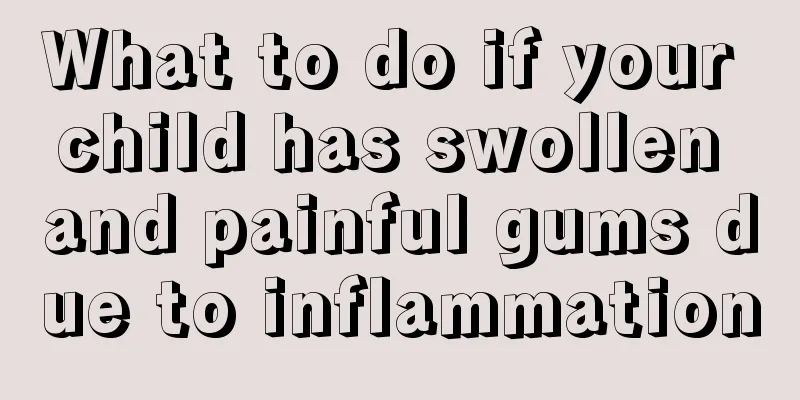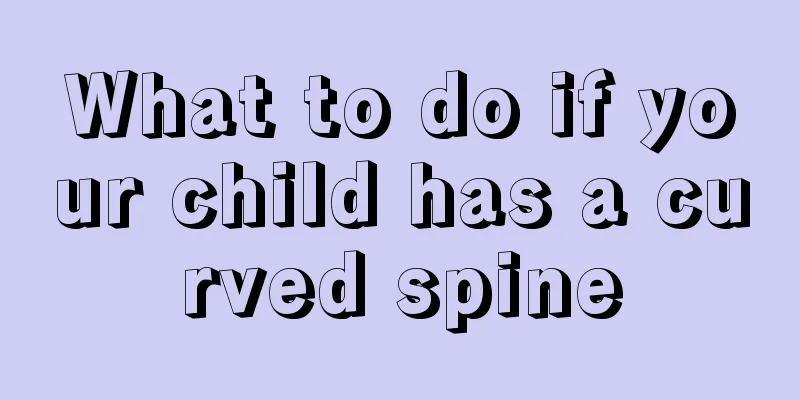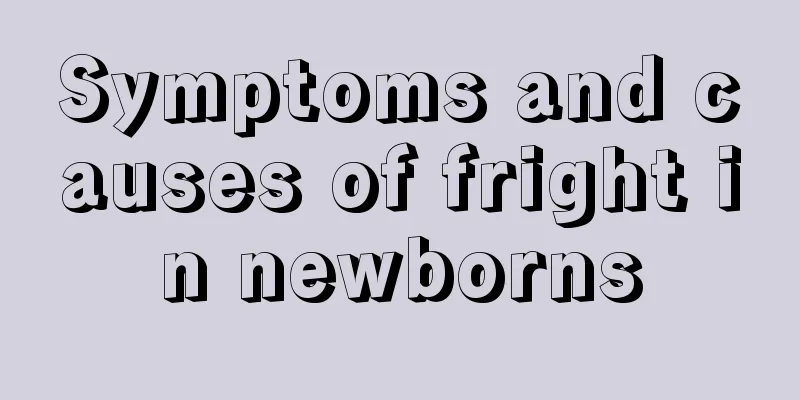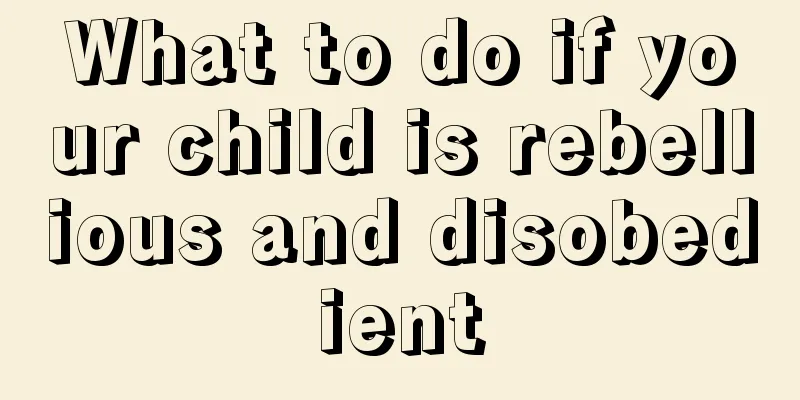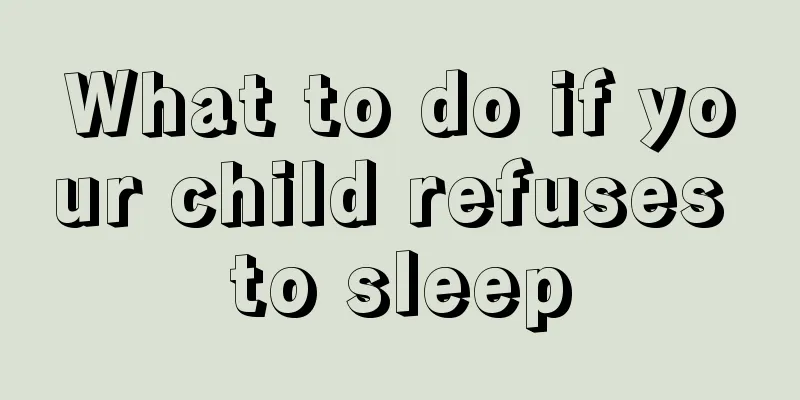What to do if your baby has stomachache
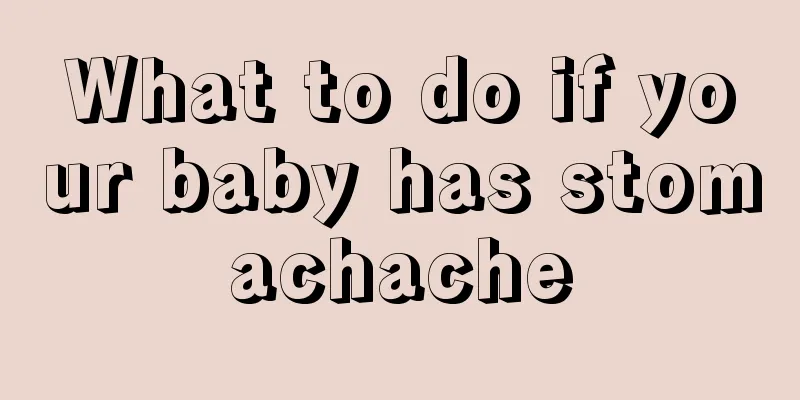
|
During infancy, parents often experience stomachaches in their babies. Many parents feel helpless about how to deal with these symptoms. In fact, if parents are calm enough to do some simple tests themselves, they can distinguish harmless from dangerous symptoms and help their children feel more comfortable at home. Below are several situations regarding baby's stomach pain, I hope it will help parents judge their baby. 1. Flatulence Example: A baby a few weeks old cries after every meal but not usually when being fed. Did the baby drink too much or too little milk? Was the formula too cold or too thick for the pacifier? Did the baby burp loudly afterwards? In addition to the above reasons, the most likely cause of a baby's crying is either flatulence or excessive intestinal peristalsis. Other symptoms that may accompany bloating include mild nausea, a bloated stomach, and constipation. If your baby cries between about 6 and 9 p.m., it has nothing to do with gas. For reasons that are not fully explained, babies often cry before dusk or at night, and it does not seem to be because of hunger or fatigue. This cry is different from a cry of pain. However, swallowing air while crying may cause stomach pain. At this time of day, holding your baby in a sling is the best way to calm him. It is important for inexperienced parents to know that punishing a baby will not make him quiet. Most brain injuries at this age are caused by parents shaking their babies violently in an effort to stop them from crying. Symptoms of atypical gas pain include: vomiting (more than several mouthfuls), pale face, bloated stomach, diarrhea (multiple loose stools between meals), poor growth, or sudden crying due to severe pain. If these situations occur, you must seek medical help to find out the cause. Babies often develop gas if their mothers eat too much whole-wheat bread, bean curd, or vegetables such as broccoli and cabbage while breastfeeding. Infants who are not breastfeeding may benefit from a change in diet. It is best to consult a doctor before making dietary changes. Here are some ways to relieve pain and calm your child: 1. Hot compress: You can apply a hot towel or a wet compress made of chamomile tea, yarrow tea or lemon mint tea on the belly. You can also dilute schizonepeta, chamomile or 10% parsley seed oil in a 1:2 ratio and apply it on the belly, and massage the child's abdomen in a clockwise direction. It is also necessary to keep the baby warm. You can dress the baby in woolen underwear that covers the abdomen, warmer diapers, or use a heating pack. At the same time, pay attention to keeping the knees warm. 2. For the body, drinking a few tablespoons of warm fennel tea before meals can help (so-called antipyretic drops will not be more effective than fennel tea). 3. After a hiccup, hold your baby in a sling for ten minutes. Another method that has been proven effective is to place the baby with his legs apart and sit astride your thighs, with the baby's back against your chest, and then gently massage the baby's soles, heels and calves (one hand for each foot). When the baby's kicking feet encounter the resistance of the adult's hands, it is enough to calm him down. 4. Control your food intake. 5. During the breastfeeding stage, mothers should pay attention to the intake of whole wheat bread, brown oatmeal or milk, as these foods often cause bloating; however, fruits with pits like cherries or peaches are not a problem. 6. If the mother is too busy, under exam pressure, eats too fast or is in a bad mood, the baby's symptoms will be aggravated. There is no need to worry too much about these conditions. Usually, this type of abdominal pain will disappear on its own after 8 to 12 weeks. 7. Appendicitis In toddlers and older children, appendizitis typically begins with a slow, increasing pain that lasts for several hours and is concentrated in the right lower abdomen. Abdominal pain is often accompanied by symptoms such as lack of energy, nausea, a coated tongue, and pain when walking or jumping. Urinary tract infection Possible signs of a UTI include abdominal or back pain (sometimes with fever, paleness, weakness, and loss of appetite), sudden onset of bed-wetting, and a burning sensation when urinating. This condition is usually either bladder inflammation or pyelitis. Because the burning sensation of urination is sometimes very painful, children would rather hold their urine. Parents should always be aware of whether their children have burning urine. It is important to understand that the burning sensation will disappear before the infection. Whenever the above symptoms occur, a urinalysis is necessary, although urine contamination or various external infections of the sexual organs may cause a false positive reaction. If urinary tract infections occur frequently or become chronic, they may cause serious damage to the kidneys. The diagnosis and treatment of this type of disease needs to be handled by a professional doctor. In addition to medical treatment, we recommend applying hot compresses to the bladder area to relieve pain. Inguinal hernia A hernia can be detected by observing or feeling the child's groin, where there will be a bulge (cyst) as small as a drupe or as large as an orange, usually enveloping part of the intestine or one ovary in women, and in boys, it may also extend to the scrotum. Any pain or swelling in this area requires immediate medical evaluation. The neck of the hernia sac may become so tight that the enclosed body organs cannot return to their normal position (clamp hernia). It is very difficult to push the organs inside the hernia sac back in, so ask your doctor to show you how to do it. There is a big difference between inguinal hernia and umbilical hernia. Most umbilical hernias can heal on their own even without a patch; whereas inguinal hernias rarely heal without surgical treatment. acute abdomen Colic or persistent severe abdominal pain accompanied by vomiting, paleness, and a stiff, tight pain on the inside of the abdominal wall (the child's stomach feels like a "hard plate") that can be a life-threatening acute abdomen. Some sudden onset of acute pain causes the child to scream or cry in pain, and often vomits, but there is no symptom of abdominal wall stiffness and no signs of improvement within a few hours. This symptom may be caused by intussusception (a section of intestine slides into the adjacent intestine: the large intestine is inside the small intestine). If any of these conditions occur, the child needs to receive professional medical diagnosis immediately, preferably to a hospital with a pediatric surgery department so that surgical treatment can be performed if necessary. Parents who have not experienced the less dangerous hyperketoacidotic (ketone) bloody vomiting (see 4.1.6) may confuse the sudden onset of abdominal pain with this harmless vomiting and misdiagnose the child. Abdominal pain associated with the flu In addition to chills, shivers, lethargy, headaches and body aches, abdominal pain may be a sign of the flu, and vomiting may also occur at this stage. The initial abdominal pain usually disappears once the fever has grown rapidly. The difference between this and the pain of appendicitis is that this type of abdominal pain has no specific painful area when pressing the abdomen, and the temperature difference between the axillary temperature and the rectal temperature will not exceed 0.5℃ (a few tenths of the temperature on the thermometer are marked by shorter lines). In addition, a sudden high fever over 38.5°C is not a typical symptom of appendicitis. Cold hands and feet mean that the body temperature is still rising. For children, if it is appendicitis, applying a hot water bottle to the abdomen is unbearable (please refer to the previous description of appendicitis), but for children with influenza, applying a hot water bottle on the belly will feel more comfortable. Abdominal pain in children is a common pediatric disease, but because there are many causes of abdominal pain, parents should pay attention to observe their children's symptoms when taking them to the doctor, and never use painkillers on their children at will. The above situations are for your reference only. If they don’t work, please go to a regular hospital for treatment in time. I hope mothers can adopt the methods introduced in the article. |
<<: Introduction to how many months does it take for babies to learn to walk
>>: Reasons why babies cry when feeding
Recommend
What should I do if my one-month-old baby can't sleep well?
Babies are the apple of their parents’ eyes. If a...
What is the importance of breakfast for children?
Children are in a critical stage of growth and de...
White spots on the child
Small white spots on children's bodies may be...
What are the symptoms of zinc deficiency in a 3-year-old baby?
Three-year-old babies generally enter kindergarte...
Eight-month-old baby's neck is a little crooked
Every baby should be fully examined before birth ...
Is it good for children to take a bath every day?
We all know that babies stay in amniotic fluid be...
Normal development age and precautions for boys
We boys will all go through puberty, and we need ...
Treatment for vomiting and diarrhea in nine-month-old babies
Nine-month-old babies suffer from vomiting and di...
What should I do if my child's feet are a little bent?
As children grow up, any physical changes will be...
What should I do if my child has a wheezing sound in his throat?
Most parents find that their children have phlegm...
What is the reason for white bumps on baby's gums?
White bumps will appear on the baby's gums be...
Seven-month-old baby has a fever of 39 degrees
After birth, the baby depends on his parents for ...
Why does the baby shiver?
What is the reason why the baby shivers? New pare...
How to prevent babies from getting prickly heat in summer?
In summer, the weather is very hot. If the mother...
What to do if your baby gets prickly heat
Summer is definitely the time when parents get wo...

